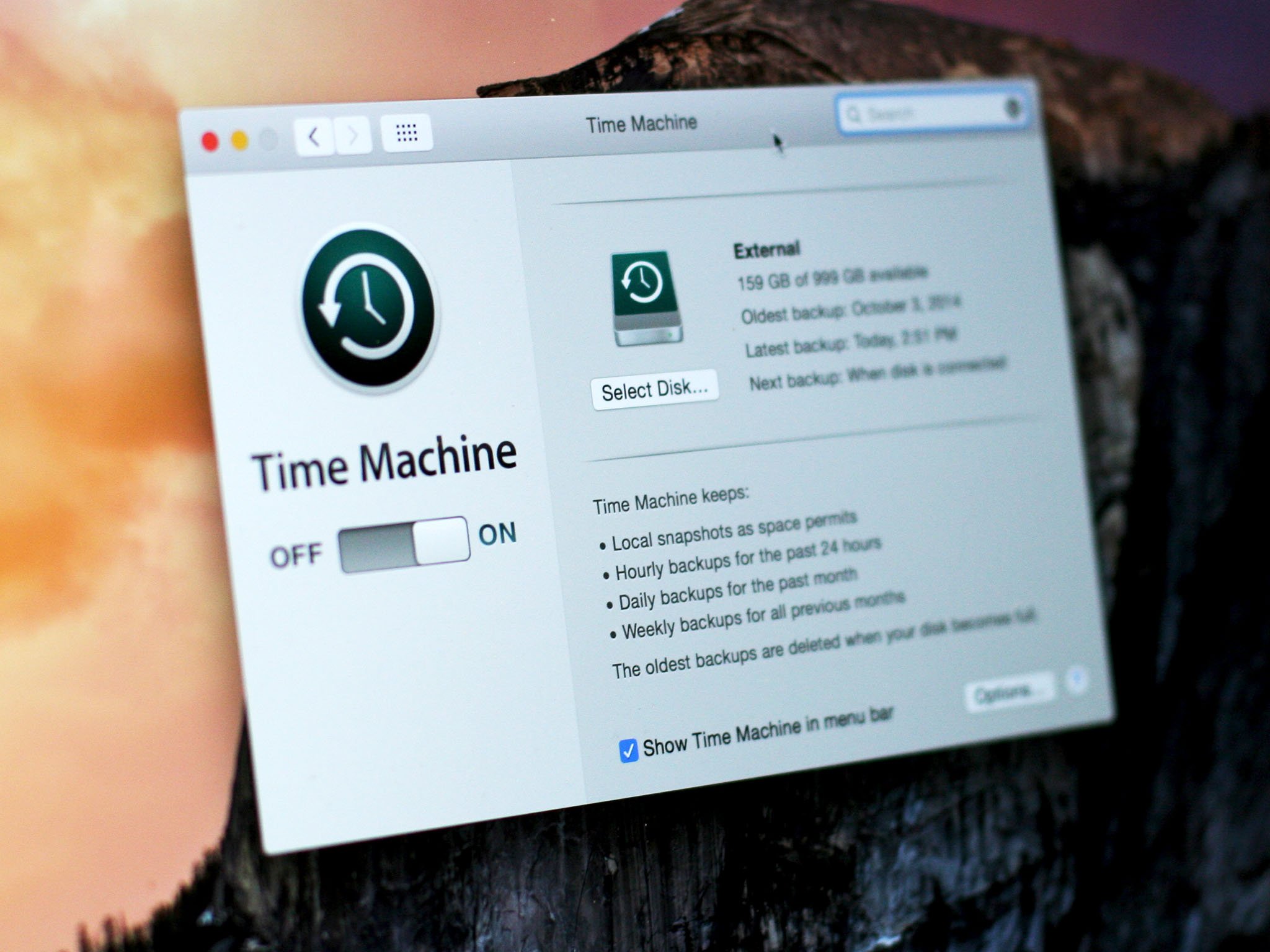Time Machine is OS X Yosemite's "OS X 10.10 Yosemite reviews, features, apps, help, and how-to")'s built-in backup software. It was introduced with OS X 10.5 Leopard and has been there ever since. If you've never used it, please start. Time Machine is absolutely the easiest way to back up your Mac, and is great for recovering individual files you've deleted or restoring your entire hard drive in the event of a catastrophe.
In this how to, I'm going to cover two aspects of using Time Machine — how to set it up initially and how to restore individual files. You can also use Time Machine to restore the entire contents of your hard drive with your OS X Recovery Partition.
To set up a Time Machine backup
Time Machine works with any hard disk connected to your computer using USB, FireWire or Thunderbolt.
- Select the Time Machine icon from the Menu.
- Select Open Time Machine Preferences...
- If Time Machine is off, set the slider to on.
- Select the disk you want to use as a Time Machine backup.
- Time Machine will set the hard drive up for backups and will automatically start the first backup within two minutes.
Time Machine backs up the entire contents of your hard disk, hourly, daily and weekly.
You don't need to use just a hard drive connected to your Mac, either. Time Machine also works on backup disks connected over a network, provided the disks support Apple File Protocol (AFP) file sharing. As long as the disk is available to your Mac, you can use it for a Time Machine backup.
Time Machine also works with Apple's Time Capsule. Time Capsule is a device connected to your local Wi-Fi network that provides network routing capabilities as well up to three terabytes of storage for local Time Machine backups. All the Macs on your local network can back up to a Time Capsule.
To restore individual files from a Time Machine backup
- Select the Time Machine icon from the Menu.
- Select Enter Time Machine.
- You'll be taken to the Time Machine window. Here you can navigate to the file or folder you need to retrieve.
- Locate the file or folder and click the Restore button.
- Time Machine will copy that file back to its original location on your hard disk.
To restore the complete contents of your hard drive from a Time Machine backup
- Power up your Mac and hold down the command and R keys to enter the Recovery Partition. Your Mac should boot to a screen that says OS X Utilities.
- Select Restore from Time Machine Backup and click Continue.
- Read the info on the Restore Your System page and click Continue.
- Select your Time Machine backup and click Continue.
- Select the most recent backup of your hard disk and click Continue. Your Mac will then restore the Time Machine backup; once it's done it will restart.
If you've had to replace your Mac's hard drive with a raw drive fresh out of the box, there's no recovery partition to restore from. But fear not, you can get the recovery rolling from the Time Machine backup disk itself. Just hold down the Option key when you start your Mac; you'll be able to select the Time Machine backup disk as your startup, instead.
I hope this helps you get rolling with Time Machine. If you're not using it, I strongly recommend you give Time Machine a try. You never know when you'll have to recover a file or a disk, and it's better to be safe than sorry.
Do you use Time Machine? If not, why? Let me know in the comments, I want to hear from you!
Note: Updated for OS X Yosemite.










No comments:
Post a Comment